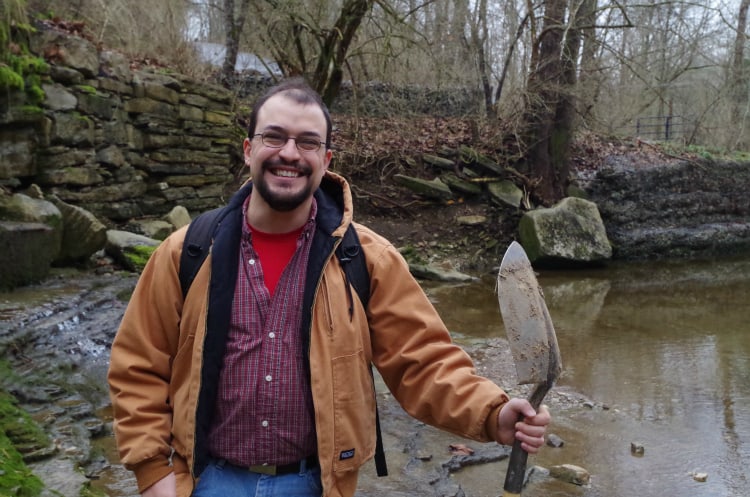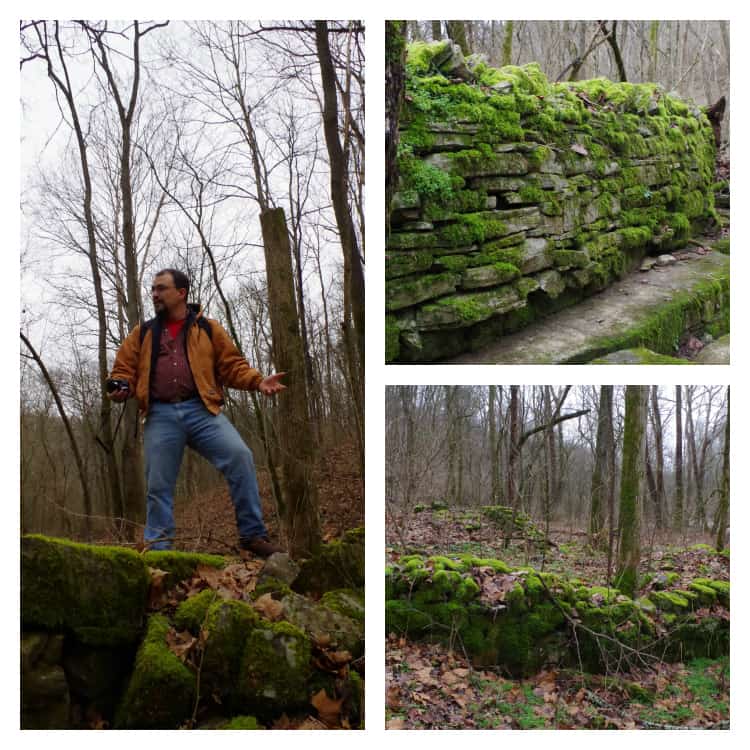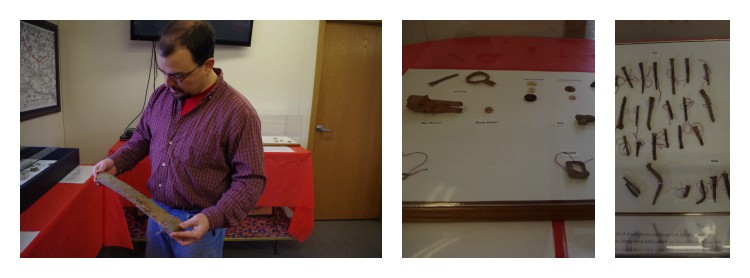Riding along a ridge 30 stories above the Kentucky River bed in his Jeep, Archaeologist Nicolas Laracuente explains there were once 200 stills on the tax records in Woodford County, Kentucky, alone. There were even more that weren’t on the tax records, he points out, because the one we’re headed to doesn’t show up in any tax records he’s yet seen. He found the site we’re heading to referenced in a lawsuit filed well over a hundred years ago.
The Beginning of Bourbon Archaeology
Laracuente became fascinated with archaeology during an elective class he took as an undergraduate at university. A common view of archaeology, which he shared before the class, is that “all the cool stuff has already been found.” By the end of the semester, when he realized there was still plenty out there to be found, he abandoned his pre-med program for archaeology.

Shortly after his arrival, he was driving along the back roads of Woodford County when he got lost in the fog. As he came over the top of the hill he saw the Old Taylor Distillery rising from the fog ahead of him. Laracuente, a former Army brat, had lived in Germany as a child and had always been fascinated by the castles dotting the landscape. Seeing such a magnificent structure in his own home state solidified his drive to find abandoned sites and tell their stories.
He began reading Chester Zoeller’s book Bourbon in Kentucky: A History of Distilleries in Kentucky, which confirmed his theory there were lost distilleries out there waiting to be found. What’s more, he began to understand there were entire towns wiped off the map because of Prohibition. Tyrone, Kentucky, is a perfect example of this. Located just outside of the present-day Wild Turkey Distillery, this town was once home to as many as nine different distilleries. One of the more notable distilleries was run by Mary Dowling, who famously moved her operation to Juarez, Mexico, and continued to produce bourbon there during Prohibition.
The Jouett Distillery Site

The hike to the site is short but difficult – the only trails that far out are made by deer. We crisscross the creek a few times before a mossy limestone wall comes into view. This first one is probably a retaining wall for the wagon trail above, Laracuente explains. We hike a little further.
“Right here is where we found a button,” he says. It was the first artifact found at the site and it’s now on display at the museum a few miles away. I asked him how on Earth he found a button in the woods. “Metal detector,” he laughed. As we make our way through the site, still marked by surveyor’s flags, he points out a wall here, a spring there, and a place he refers to as the “horse parking lot.” “We found part of a horse bridle over there,” he says, pointing to the outside of a limestone wall.
Then we get to the garbage dump. Laracuente has explained to me before the archaeological significance of finding garbage dumps near sites – there are a lot of different kinds of artifacts in a central location to sift through. One way you can tell when you’ve found a garbage dump as opposed to a collapsed structure is because the nails you’ll find will be different, he explains. If this had been a house or another structure, all the nails would be the same, but all the nails found in this area were different shapes and sizes. They also found cooked animal bones and a lid to a pot, suggesting people were cooking meals in the area as well.
We hike all around the site examining small remnants of roads, a possible spring house, and a man-made ditch where creek water was diverted to run the mill for the distilling operation. Laracuente points out how the topography of the area is constantly changing, between the creek jumping its bed during heavy rainfall and the side of the hill ever succumbing to gravity and sliding downward. The latter has likely prevented the former from wiping out the site completely.
The Future of Bourbon Archaeology

So what should you do if you think you have an abandoned distillery site in your back yard? “These sites are really fragile. You can’t just go out there with a metal detector and start digging,” explains Laracuente. “If we approach it too quickly or the wrong way we could destroy that site. If you think you have a distillery site on your property, give us a call.”
You can find Bourbon Archaeologist Nicolas Laracuente on Twitter @archaeologist and you can read his blog here. You can reach the Jack Jouett Historic Site for more information on volunteering or donating money to support bourbon archaeology here.








